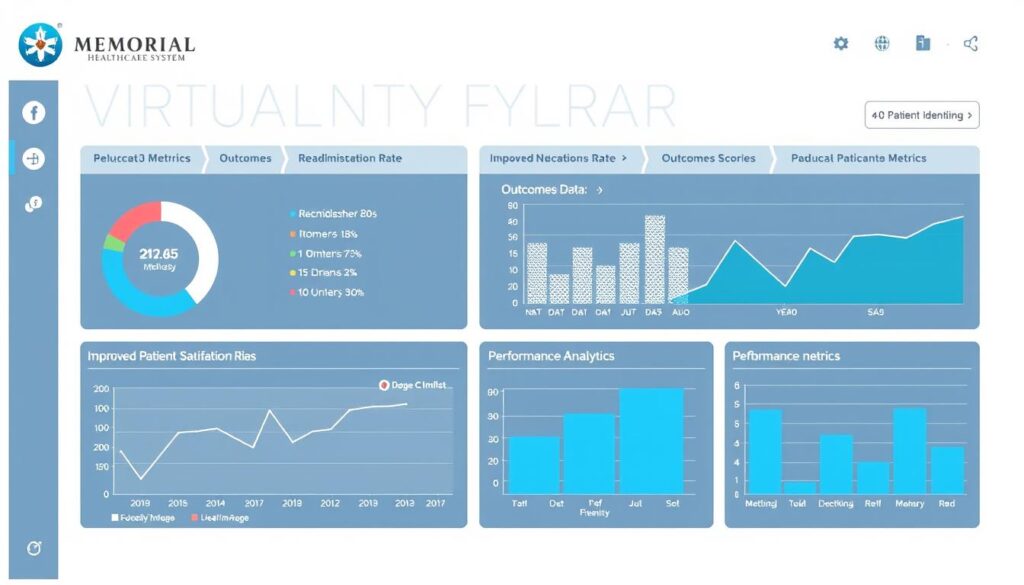Healthcare systems worldwide face unprecedented challenges: staffing shortages, administrative overload, and rising costs. In response, a technological revolution is quietly transforming patient care. Virtual nurses and AI chatbots in healthcare are emerging as powerful tools that extend the capabilities of medical professionals while providing patients with responsive, 24/7 support. These digital assistants are not replacing human connection in healthcare—they’re enhancing it by handling routine tasks, monitoring patient status, and ensuring critical information reaches the right people at the right time.
What Are Virtual Nurses and AI Chatbots?
Virtual nurses are AI-powered digital assistants designed to perform many of the routine monitoring and communication tasks traditionally handled by nursing staff. Unlike simple chatbots, virtual nurses utilize sophisticated algorithms to interpret patient data, recognize patterns, and provide personalized care recommendations.
AI chatbots in healthcare are conversational interfaces that use natural language processing (NLP) to interact with patients, answer questions, collect information, and guide users through healthcare processes. These systems range from basic rule-based chatbots to advanced AI-driven virtual assistants capable of understanding context and learning from interactions.
Key Functions of Virtual Nurses
- Continuous patient monitoring through connected devices
- Medication adherence tracking and reminders
- Symptom assessment and triage recommendations
- Post-discharge follow-up and care plan management
- Health education and personalized guidance
Common Applications of Healthcare Chatbots
- Appointment scheduling and management
- Initial symptom assessment and care direction
- Medical information and FAQ responses
- Insurance and billing support
- Mental health screening and support
Benefits of Virtual Nurses and AI Chatbots in Healthcare

24/7 Patient Monitoring and Support
Unlike human staff who require shifts and breaks, virtual nurses and AI chatbots provide continuous monitoring and support. This constant availability ensures that patient concerns are addressed promptly, regardless of the time of day. For patients with chronic conditions requiring ongoing management, this round-the-clock attention can significantly improve health outcomes and provide peace of mind.
Reduced Administrative Burden
Healthcare professionals spend up to 70% of their time on administrative tasks rather than direct patient care. AI chatbots can automate routine processes such as appointment scheduling, form completion, and basic information gathering. This automation allows clinical staff to focus more on complex care activities that require human expertise and empathy, ultimately improving both staff satisfaction and patient experience.
Personalized Care Plans
By analyzing patient data from electronic health records, virtual nurses can help develop and manage personalized care plans. These systems track patient progress, adjust recommendations based on new information, and provide tailored health education. This level of personalization would be challenging to maintain consistently with limited human resources alone.
Cost Efficiency
The implementation of virtual nurses and AI chatbots represents a significant initial investment, but the long-term cost benefits are substantial. Healthcare organizations using these technologies report reduced readmission rates, decreased unnecessary emergency department visits, and more efficient use of staff resources. A 2023 analysis by the Healthcare Information and Management Systems Society (HIMSS) found that hospitals implementing AI-assisted nursing systems saved an average of $3.6 million annually in operational costs.
Transform Your Healthcare Operations with AI Solutions
Discover how virtual nurses and AI chatbots can reduce staff burden, improve patient outcomes, and optimize resources at your healthcare facility.
Challenges and Considerations

Advantages
- 24/7 availability for patient support
- Reduction in administrative workload
- Consistent quality of information delivery
- Scalable solution for staff shortages
- Data-driven insights for care improvement
Challenges
- Data privacy and security concerns
- Patient trust and technology acceptance
- Integration with existing systems
- Limitations in handling complex cases
- Regulatory compliance requirements
Data Privacy and Security
Healthcare data is among the most sensitive personal information, and its protection is paramount. Virtual nurses and AI chatbots must comply with regulations like HIPAA in the United States and GDPR in Europe. Organizations implementing these technologies must ensure robust encryption, secure authentication, and proper data handling protocols to protect patient information from breaches.
Building Patient Trust
Many patients, particularly older adults or those with limited technology experience, may be hesitant to interact with AI systems for their healthcare needs. Developing interfaces that are intuitive, accessible, and transparent about their AI nature is essential for building trust. Healthcare organizations must also provide clear options for patients to connect with human staff when preferred.
Technical Limitations
While AI technology continues to advance rapidly, current systems still have limitations in understanding nuanced health concerns, complex symptoms, or emergency situations. Virtual nurses and chatbots must be designed with clear escalation pathways to human providers when they encounter situations beyond their capabilities.
Ethical Implications
The implementation of AI in healthcare raises important ethical questions about the appropriate balance between automation and human care. Healthcare organizations must carefully consider issues of equity, ensuring that AI systems don’t perpetuate or amplify existing healthcare disparities. Additionally, clear frameworks for accountability must be established when AI systems are involved in care decisions.
Real-World Examples and Case Studies

Mayo Clinic’s Advanced Care at Home Program
The Mayo Clinic has implemented a comprehensive virtual care program that includes AI-powered monitoring systems to support patients recovering at home. These systems continuously track vital signs, medication adherence, and symptoms, alerting human providers only when intervention is needed. The program has reported a 40% reduction in readmission rates and significantly higher patient satisfaction compared to traditional recovery pathways.
Providence Health’s Virtual Nursing Assistant
Providence Health has deployed a virtual nursing assistant across its network of hospitals to support bedside nurses. The system handles routine documentation, medication verification, and patient education, allowing human nurses to focus on direct patient care and complex clinical decisions. Since implementation, Providence has reported a 25% reduction in nursing documentation time and improved nurse retention rates.
NHS Digital’s COVID-19 Chatbot
During the COVID-19 pandemic, the UK’s National Health Service (NHS) deployed an AI chatbot to help manage the surge in public inquiries. The chatbot provided symptom assessment, testing information, and isolation guidance based on current protocols. This implementation successfully diverted over 60% of routine inquiries away from overwhelmed call centers, ensuring that human staff could focus on complex or urgent cases.
Sensely’s Virtual Nurse “Molly”
Sensely’s virtual nurse platform, featuring an avatar named Molly, has been implemented in several healthcare systems to support chronic disease management. The system combines conversational AI with remote monitoring to track patient symptoms, provide medication reminders, and escalate concerns to human providers when necessary. Clinical studies have shown that patients using Sensely’s platform have 31% fewer hospital readmissions compared to standard care groups.
Implementation Strategies for Healthcare Organizations

Assessing Organizational Needs
Before implementing virtual nurses or AI chatbots, healthcare organizations should conduct a thorough assessment of their specific needs and challenges. This evaluation should identify high-volume routine tasks that could benefit from automation, areas where staff are experiencing burnout, and patient touchpoints that could be enhanced through digital assistance.
Selecting the Right Technology
The market offers numerous virtual nurse and chatbot solutions with varying capabilities and specializations. Organizations should evaluate options based on integration capabilities with existing electronic health records, scalability, customization options, and compliance with relevant healthcare regulations. Involving both clinical and IT stakeholders in the selection process is crucial for successful implementation.
Integration with Existing Systems
For maximum effectiveness, virtual nurses and AI chatbots must integrate seamlessly with existing healthcare systems, particularly electronic health records. This integration enables the AI to access relevant patient information, update records with new data collected, and maintain a comprehensive view of patient care across different touchpoints.
| Integration Aspect | Purpose | Implementation Considerations |
| Electronic Health Records (EHR) | Access and update patient medical histories | Use secure APIs with HIPAA compliance |
| Appointment Scheduling Systems | Manage bookings and reminders | Ensure real-time synchronization |
| Telemedicine Platforms | Support virtual consultations | Seamless handoff between AI and human providers |
| Pharmacy Systems | Medication management and refills | Accurate medication database integration |
| Billing and Insurance Systems | Process payments and claims | Compliance with financial regulations |
Staff Training and Change Management
The successful implementation of virtual nurses and AI chatbots requires buy-in from the healthcare staff who will work alongside these technologies. Comprehensive training programs should be developed to help staff understand how to collaborate effectively with AI systems, when to override automated recommendations, and how to address patient questions about these technologies.
Future Trends in Virtual Nursing and Healthcare AI

Advanced Diagnostic Capabilities
As AI technologies continue to evolve, virtual nurses are expected to develop more sophisticated diagnostic capabilities. These systems will analyze patterns across vital signs, symptoms, medical history, and even subtle changes in patient behavior to identify potential health issues earlier than traditional monitoring methods. While human providers will remain essential for final diagnoses, AI systems will increasingly serve as valuable diagnostic partners.
Emotional Intelligence in AI
Current healthcare chatbots focus primarily on functional interactions, but future systems will incorporate greater emotional intelligence. Advanced natural language processing will enable AI to recognize emotional cues in patient communications, adjust responses accordingly, and provide more empathetic support. This evolution will help address one of the current limitations of healthcare AI: the lack of emotional connection.
Predictive Care Models
By analyzing vast amounts of patient data, future virtual nursing systems will develop increasingly accurate predictive models for patient outcomes. These predictions will enable more proactive interventions, such as adjusting medication dosages or scheduling check-ins before conditions worsen. Healthcare organizations implementing these predictive systems may significantly reduce complications and emergency interventions.
Integration with Ambient Computing
The next generation of virtual nurses will extend beyond screens and mobile devices to become part of the ambient environment in healthcare settings and homes. Voice-activated systems, smart sensors, and IoT devices will create a seamless care experience where patients can interact naturally with AI assistance throughout their daily activities, rather than only during dedicated healthcare interactions.
Start Implementing AI Chatbots in Your Healthcare Organization
Join the leading healthcare providers already benefiting from virtual nurses and AI chatbots. Our experts will guide you through selection, implementation, and optimization.
Case Study: Memorial Healthcare System’s Virtual Nurse Implementation

Challenge
Memorial Healthcare System, a six-hospital network serving South Florida, faced significant nursing shortages while experiencing increasing patient volumes. Nursing staff reported high burnout rates, with over 40% of their time spent on documentation and routine tasks rather than direct patient care.
Solution
In 2023, Memorial implemented a comprehensive virtual nurse program across all facilities. The system included:
- AI-powered documentation assistants that transcribed and organized patient interactions
- Virtual triage chatbots for incoming patients
- Remote monitoring systems for post-discharge patients
- Automated medication reconciliation and education
Results
After 12 months of implementation, Memorial Healthcare System reported:
- 28% reduction in nursing documentation time
- 32% decrease in readmission rates for monitored patients
- $4.2 million in annual cost savings
- 22% improvement in nurse satisfaction scores
- 91% of patients rating their experience with virtual nursing as “good” or “excellent”
“The virtual nurse program has transformed how we deliver care. Our human nurses now focus on the complex, empathetic aspects of nursing while AI handles the routine tasks. It’s not about replacing nurses—it’s about giving them superpowers.”
Frequently Asked Questions

Can virtual nurses and AI chatbots replace human healthcare providers?
No, virtual nurses and AI chatbots are designed to complement and support human healthcare providers, not replace them. These technologies excel at handling routine tasks, documentation, and basic patient interactions, which allows human staff to focus on complex care decisions, emotional support, and critical thinking that require human judgment and empathy. The most effective healthcare models integrate AI tools with human expertise.
How do healthcare organizations ensure patient data privacy with AI systems?
Healthcare organizations implement multiple layers of security to protect patient data in AI systems, including end-to-end encryption, secure authentication protocols, and regular security audits. These systems must comply with healthcare regulations like HIPAA in the US or GDPR in Europe. Additionally, many organizations limit what data AI systems can access, implement strict data retention policies, and provide transparent privacy notices to patients about how their information is used.
What is the typical return on investment for implementing virtual nurses?
While implementation costs vary based on scale and complexity, healthcare organizations typically see positive ROI within 12-24 months. Cost savings come from reduced readmissions (average savings of ,000 per avoided readmission), decreased documentation time (saving 1-2 hours per nurse per shift), improved resource allocation, and reduced length of stay. Organizations also report significant improvements in staff retention, which provides additional financial benefits by reducing recruitment and training costs.
How do patients typically respond to virtual nurses and healthcare chatbots?
Patient responses vary based on demographics, technical comfort, and implementation quality. Research indicates that younger patients and those with chronic conditions requiring frequent healthcare interactions tend to be most receptive. Initial skepticism is common, but acceptance increases with positive experiences. Key factors affecting patient satisfaction include system responsiveness, accuracy of information, ease of use, and clear pathways to human assistance when needed. Organizations that provide proper patient education about these tools typically see higher satisfaction rates.
Conclusion: The Collaborative Future of Healthcare

Virtual nurses and AI chatbots in healthcare represent not just technological innovation but a fundamental shift in how care is delivered and experienced. As these systems continue to evolve, they will increasingly serve as valuable partners to human healthcare providers—handling routine tasks, monitoring patients continuously, and providing consistent information while allowing human staff to focus on the complex, empathetic aspects of care that require human judgment.
The most successful implementations will be those that thoughtfully integrate AI capabilities with human expertise, creating a collaborative model that leverages the strengths of both. Healthcare organizations that embrace this collaborative future, while carefully addressing challenges around privacy, trust, and equity, will be positioned to deliver higher quality care to more patients with greater efficiency.
As we look ahead, the question is not whether AI will transform healthcare, but how we can shape that transformation to best serve the fundamental goal of healthcare: improving patient outcomes and experiences. Virtual nurses and AI chatbots are not the complete solution to healthcare’s challenges, but they represent a powerful set of tools that, when properly implemented, can help create a more responsive, accessible, and human-centered healthcare system for all.







